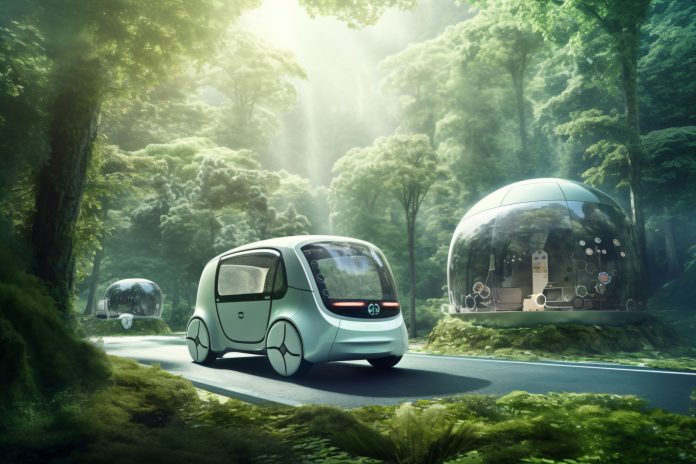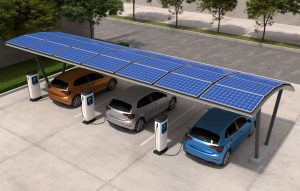Transportation today is at a critical juncture, with sustainability becoming as crucial as efficiency. In this context, integrating solar energy into modern transport systems marks a significant stride.
Imagine a typical commute, but this time, subtly powered by solar energy. This scenario is gradually turning into a reality, reflecting a deeper understanding of environmental responsibilities. Solar power in transportation is evolving beyond a concept, supported by practicality and a growing global commitment.
This shift towards solar-powered mobility isn’t just about embracing new technologies; it’s about advancing towards a more sustainable future in a measured, realistic way.
The Promise Of Solar Energy In Modern Transport
Solar energy is redefining transportation, offering innovative solutions to meet growing environmental and energy concerns. The benefits of integrating solar power into our transport systems include:
- Reduction In Greenhouse Gas Emissions: Utilizing solar power significantly curtails emissions from traditional fuel sources, contributing to a healthier planet.
- Sustainability: Solar energy, an inexhaustible resource, ensures a continuous, reliable supply for transportation needs, unlike finite fossil fuels.
- Cost Efficiency: While initial investment might be high, solar energy can lead to substantial savings in fuel and maintenance costs over time.
- Energy Independence: Embracing solar power reduces dependence on imported fuels, promoting local energy security and resilience.
Besides these benefits, solar energy is already making inroads in various transport modes. Here are some current applications:
- Solar-Powered Vehicles: These vehicles, ranging from cars to buses, use integrated photovoltaic cells to convert sunlight into electric power, providing an eco-friendly travel option.
- Solar-Enhanced Public Transit: Many urban transit systems now incorporate solar panels on buses and at stations, harnessing this energy to power operations and amenities.
- Solar EV Charging Stations: With the rise of electric vehicles (EVs), solar-powered charging stations offer a green and efficient way to recharge, further reducing reliance on the traditional grid.
Through innovative applications and growing accessibility, solar power is not just lighting our way—it’s driving us forward.
Challenges In Solar-Powered Mobility
While solar energy offers significant promise for transportation, addressing challenges is essential to fully realize its potential. These include:
- Energy Storage Limitations: Limited energy density in current batteries for solar and electric vehicles restricts their range and utility. Enhancing storage technology is vital for practical, long-distance travel.
- Efficiency Of Solar Panels: The viability of solar transportation is heavily dependent on the efficiency of photovoltaic cells. Higher efficiency is critical for their widespread adoption in various transport modes.
- Weather Dependency: Solar energy’s efficiency can be impacted by weather conditions and geographical location, influencing its reliability as a primary energy source.
Tackling these challenges is imperative not just for achieving cleaner and more energy-efficient transportation, but also for aligning with wide-ranging initiatives shaping the future of mobility.
Global Commitment To Sustainable Transport
The commitment to greener methods was highlighted at the 2021 UN Sustainable Transport Conference. Discussions focused on transport’s impact on climate change, economic growth, and sustainable development.
UN Secretary-General Antonio Guterres stressed the indispensable role of eco-conscious transportation systems in the global progression towards alternative energy resources. His emphasis aligns with the current shift in public and private sectors towards incorporating solar energy in mobility solutions.
Future Developments In Solar-Powered Transport
The evolution of solar-powered transport is shaped by technological innovations and forward-thinking strategies. These developments are crucial in steering our transition to a more sustainable, solar-reliant mode of transportation:
- Enhanced Solar Cell Technology: Advancements in solar cell technology, especially with perovskite solar cells, are making them more efficient and cost-effective. This innovation is essential for integrating solar energy into vehicles, enhancing their energy efficiency and operational range.
- Solar Battery Innovation: New battery technologies like solid-state and lithium-sulfur are expected to significantly improve solar energy storage. These advances could lead to faster charging times and longer-lasting power, significantly boosting the performance of solar-powered vehicles.
- Hybrid Solar Energy Systems: The development of hybrid systems combining solar energy with other renewable sources aims to optimize efficiency. This innovation is key to maintaining consistent power for solar transport, regardless of weather variations.
- Integration Of Solar Power With Smart Infrastructure: The adoption of smart technologies in infrastructure is improving the utility of solar-powered vehicles. Smart systems for traffic control, energy management, and data analysis are enhancing how solar energy is used in urban transport networks.
- Policy Support And Incentives For Solar Mobility: Supportive government policies and incentives are indispensable in promoting solar-powered transport. Measures like tax benefits, purchase subsidies, and investment in solar infrastructure are helping to speed up the adoption of solar energy in transportation.
Each of these developments contributes to a more efficient and green future. They’re not just reshaping how we think about mobility but also how we implement and use it every day.
Final Thoughts
The move towards integrating solar energy in transportation is a significant step for both the environment and our society. It demonstrates a clear commitment to smarter, sustainable travel. Despite the challenges, the progress made so far is encouraging, suggesting a future where our journeys are cleaner and more energy efficient.
As we continue to innovate and adapt, solar power in transportation isn’t just an option; it’s becoming a vital part of how we think about and manage our mobility. This evolution towards greener methods shows a promising direction for both our present and future transport needs.












